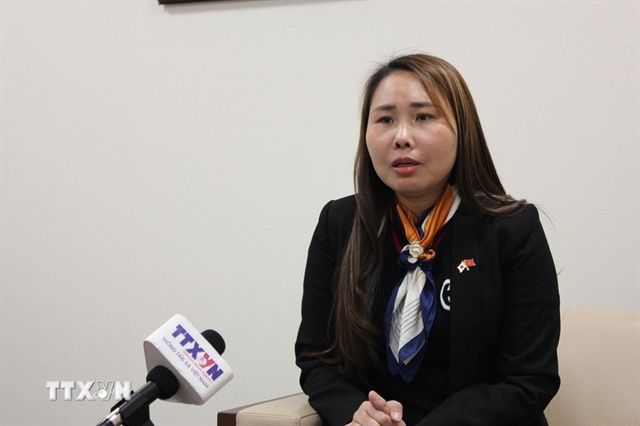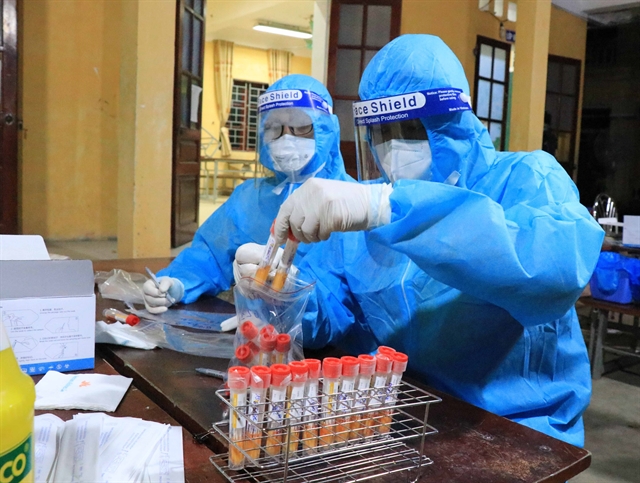 Opinion
Opinion

Minister of Health Nguyễn Thanh Long spoke to the media about his evaluation of the current wave of COVID-19 infections in the country and efforts to secure 150 million vaccines by the end of the year.

|
| Health workers in protective suits sort samples for COVID-19 testing collected from local residents of Giang Liễu village, Phương Liễu Commune, Quế Võ District, the northern province of Bắc Ninh on June 4, 2021. — VNA/VNS Photo Thanh Thương |
Minister of Health Nguyễn Thanh Long spoke to the media about his evaluation of the current wave of COVID-19 infections in the country and efforts to secure 150 million vaccines by the end of the year.
How do you assess the current outbreaks in Việt Nam?
Under the leadership of the Prime Minister, the National Steering Committee on COVID-19 Prevention and Control, and the efforts of all localities, to date, local outbreaks are under control with the number of new cases detected last week declining compared to the week before that, especially in the two hot spot provinces of Bắc Giang and Bắc Ninh in the northern region.
HCM City has been carrying out very decisive measures from city-wide social distancing orders and large-scale sample collecting to community screenings as well as contact tracing, which is helping to curb transmissions.
The virus variant that is wreaking havoc in the fourth wave of infections in Việt Nam, is it more dangerous?
The Delta variant of coronavirus (first documented in India) is new to Việt Nam in this current wave.
The Beta variant (first documented in the UK) is 1.7 times more transmissible to the original virus, but the Delta variant is even 40 per cent more contagious than the Beta one, according to recent figures from the UK. This new, highly contagious variant explains the large cases in this wave.
Also, we have observed that the COVID-19 patients’ conditions took a turn for the worse in quite a shorter space of time compared to before, which really concerns us.
What are the main points of the plan underway to contain the outbreaks throughout the country?
We have made decisions on whether to implement lockdowns, on what scale and for how long, depending on the situation to contain the COVID-19 outbreaks but with the least possible impact on socio-economic developments.
Local health authorities have also been faithfully following the instructions from the health ministry and the National Steering Committee for COVID-19 Prevention and Control on contact tracing and quarantine protocols.
The testing capacity has been significantly ramped up, and in recent times, the number of samples processed in a day has gone up threefold compared to the previous wave of infections.
Regarding treatment, the health ministry has deployed field hospitals and intensive care centres in the worst-hit localities to handle the situation on-site. A large number of medical staff and medical students from many localities across the country volunteered to support in the worst hit provinces of Bắc Ninh and Bắc Giang.
We have also made use of technology to enhance monitoring at quarantine facilities in Bắc Giang and Bắc Ninh.
The local health authorities have also sped up vaccination efforts in Bắc Giang and Bắc Ninh, extending the priority groups to include workers in industrial zone-related infection clusters.
What happened with the current vaccine strategy?
The health ministry and relevant authorities, under the instructions from the Party and the State, have stepped up negotiations with all vaccine makers and vaccine producing countries.
The health ministry has conducted some 200 discussions with suppliers to purchase, import, or receive vaccine aid, resulting in commitment of 128.9 million doses to inoculate the population until the end of the year.
However, with the aim of having 150 million doses to cover 75 per cent of the Vietnamese population by the end of the year, the health ministry is still actively working to find more sources of vaccine supplies to achieve herd immunity and bring back normal life. — VNS